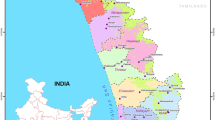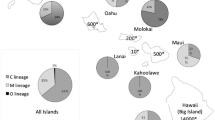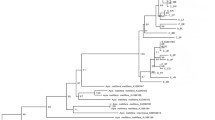Summary:
The large subunit of the ribosomal (lr) RNA gene of Thai Apis cerana was amplified and sequenced. The average sequence divergence among geographically diverse bees was 1.13% (0.15% - 1.70%, n = 8). Based on these nucleotide sequences, genetic differentiation analysis of A. cerana was simplified to a RFLP based on Dra I. Four haplotypes of digested lrRNA gene were observed. Haplotype A was found in north, north-east and the central region (collectively called the north-to-central sample) whereas haplotype B was restricted to specimens from peninsular Thailand, Phuket and Samui Islands (collectively called the southern sample). Haplotype C was found in 47.06% of A. cerana originating from Samui Island but was not found in other geographic samples. Geographic heterogeneity analysis and F ST statistics indicated the existence of population differentiation of A. cerana in Thailand (P < 0.0001). Analysis of molecular variance (AMOVA) also illustrated significant genetic differences between bees from the north-to-central region (A), peninsular Thailand and Phuket (B) and Samui Island (C) (P < 0.0001).
Similar content being viewed by others
Author information
Authors and Affiliations
Additional information
Received 17 July 2000; revised 6 March 2001; accepted 20 March 2001.
Rights and permissions
About this article
Cite this article
Sittipraneed, S., Sihanuntavong, D. & Klinbunga, S. Genetic differentiation of the honey bee (Apis cerana) in Thailand revealed by polymorphism of a large subunit of mitochondrial ribosomal DNA. Insectes soc. 48, 266–272 (2001). https://doi.org/10.1007/PL00001776
Issue Date:
DOI: https://doi.org/10.1007/PL00001776




